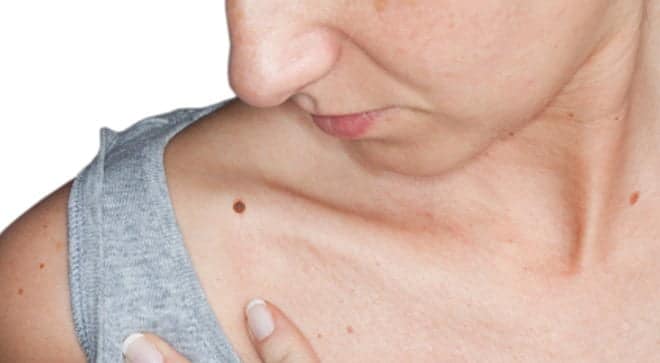A promising route to developing new skin cancer treatments has been identified by scientists at the University of Bath, who have found a molecule that suppresses the growth of melanoma.
While waiting for the next phases of Israeli vaccine against melanoma (already successfully tested in mice), a molecule arrives, DIRC3, really crucial. Although research is at an early stage, the team hopes that this work will help develop new ways to combat and stop melanoma and potentially other cancers as well.
The discovery
The team from the Department of Biology and Biochemistry at the University of Bath studied a group of “long non-coding RNAs” (IncRNAs) with colleagues from the Ludwig Institute for Cancer Research at the University of Oxford, the Wellcome Sanger Institute and the University of Lausanne, in Swiss.
IncRNAs are molecules transcribed from our DNA that do not produce proteins and whose functions remain largely unknown. In the specific case, the particular IncRNA group that the team was interested in is thought to be involved in cancer.
From a group of 245 IncRNAs associated with melanomas they isolated and identified one, called DIRC3 (Disrupted In Renal Carcinoma 3), which acted as a tumor suppressor. It synthetically blocked the spread of human melanoma cells when grown in laboratory experiments.
Using a genetic modification to stop production DIRC3, the team saw that theanoichia, a form of cell death linked to the spread of malignant tumors, has increased dramatically from two to eight times.

Scientists have also shown that DIRC3 activates the gene called IGFBP5, a key tumor suppressor. A gene that plays a role in the complex networks that govern the expression of genes important for melanoma growth and spread to other parts of the body.
The role of data to stop melanoma
The researchers used clinical data from the Cancer Genome Atlas to link the expression DIRC3 the outcomes of patients with melanoma. They found that melanoma patients who produced high levels of DIRC3 they had statistically significant increased survival rates compared to patients who expressed low levels.
The study is published in PLOS Genetics.
Dr Keith Vance, from the Department of Biology and Biochemistry at the University of Bath, said: “Although it is early stages, we are excited about the potential for drug activation by DIRC3 to become a new way to treat skin cancer. This research takes vital steps towards any future development of the therapy."
Giant strides have been made recently in the treatment of melanoma. However, not all patients respond to current therapies and most skin cancers become drug resistant over time.
This new way of treating melanoma can be a decisive tool to stop it.
References: Elizabeth A. Coe, Jennifer Y. Tan, Michael Shapiro, Pakavarin Louphrasitthiphol, Andrew R. Bassett, Ana C. Marques, Colin R. Goding, Keith W. Vance. Long noncoding RNA DIRC3 is a melanoma tumor suppressor. PLOS Genetics, 2019; 15 (12): e1008501 DOI: 10.1371 / journal.pgen.1008501


